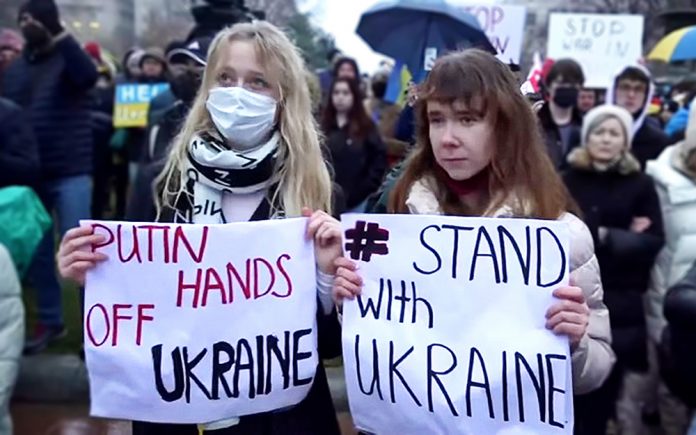
By Haddon Libby
The Russian invasion is expected to cause oil prices to increase to the $120/barrel. If prices increase to that level, expect $6/gallon gas and an inflation rate of more than 8%, says Oren Klackin of Oxford Economics. With the Federal Reserve expected to increase the Federal Funds at its next meeting on March 16th, they now must reconsider the pace of rate increases. As higher energy costs typically lead to a slowing in the economy, the Fed will most likely reduce the pace of rate increases. Until the Russian invasion of the Ukraine, many believed that the Federal Reserve would increase the Fed Funds rate from the current 0% – 0.25% range to 0.5% – 0.75% range on March 16th. Rates were expected to go up by 2% over the next year. Given recent events, most expect the Fed to proceed more slowly than was expected only two weeks ago. If the Fed defies expectations, it is because they feel that inflationary pressures pose a greater threat than the slowing of the economy that higher rates would encourage.
The Russia-Ukraine War will also cause wheat prices to go up as Russia is the third largest wheat producer in the world with 86 million metric tons (tonnes). A metric ton is roughly 2,200 pounds. China is the world’s largest wheat producer at 134 million tonnes followed by India at 99 million, the US at 47 million, France with 37 million. Ukraine is ninth at 26 million.
With a population of 146 million, Russia exports the equivalent to $2,200 per person. Its top exports are oil, precious metals like gold, iron/steel and wheat, representing 59% of Russian exports. Russia’s largest import is machinery, including computers with a value of $73 billion. Vehicles are next at $18 billion followed by medicine, plastics and medical devices.
China is Russia’s top trading partner at $49 billion or 15% of all activity. Most expect this number to go up as China takes advantage of Russia’s self-imposed trade predicament. The Nederlands is Russia’s second largest trading partner at $25 billion followed by the United Kingdom ($23 billion), Germany ($19 billion), Belarus ($16 billion) and Turkey ($15 billion). The United States was ninth at $11 billion.
The top export of Ukraine is wheat at $9 billion. This represents nearly 20% of all Ukrainian exports. Iron/steel is second at $8 billion, oils like safflower or vegetable total $6 billion, raw materials like ash at $4 billion.
Ukraine’s top trade partner before the war was Russia at $3.7 billion. Poland was second at $3.3 billion followed by Italy ($2.6B), Turkey ($2.4B), Germany and China (both with $2.2B). The United States was 13th at $1.1 billion.
In a twist from the past, the United States exports more oil and gas than it imports. Higher oil and gas prices should strengthen the US economy so long as prices stay below $100/barrel. If prices go too high, the net benefit to the oil and gas industry is dwarfed by the negative impact on business and most consumers.
On its own, the Ukrainian invasion by Russian is disruptive but nothing that financial markets cannot digest. The larger issue at play is how China perceives the West’s determination against Russia’s aggression. China has made it no secret that they see Taiwan as a rightful part of its country. The impact of a Chinese war with Taiwan is the larger geopolitical risk that we need to be concerned with.
While most expect that Ukraine will fall to Russia, it is the resolve of the Western World and democracies against such aggression that will impact each of us for years to come. Weakness or a lack of unity would most certainly increase the chances of further acts of aggression. Whether we like or dislike our Democratically elected leaders, now is a time when we all must stand in unity against despots. Comments by wannabe despots like Donald “January 6th” Trump do nothing to help the cause of freedom.
Haddon Libby is the Founder and Chief Investment Officer of Winslow Drake Investment Management. For more information on our services, please visit www.WinslowDrake.com.








































